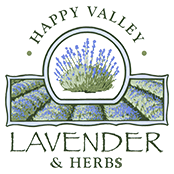|

September 2013
King Kale
Sucess with this tasty fall veggie...
Hail King Kale ~ the latest buzz choice in the vegetable world!
And indeed, from the pheasants and the kings of the Middle Ages, this stoic vegetable can trace its historic lineage to a humble open-headed or open-leafed Cabbage. Interesting enough in far away hotter climates like Kenya in East Africa, its local name “sukuma wiki” means “to stretch the week…” Now its reputation, in North America especially, is “Super food”!
My “King Kale” arrived through a package of seed from Spain when my girlfriend Suzanne walked the “El Camino in Spain”, also known as St James Pilgrimage or “El Santiago de Compostela”. When she stopped nightly at the hostels, one nourishing dinner was “Caldo verde”…Kale soup with spicy sausages, beans, onions & potatoes with crusty bread. Ah yes, served with a glass of delicious local red vino.
And kingly my Pilgrim’s Kale grew too: maturing in the first season at 6+feet! I have given some of this seed to Mary Alice Johnson for her heritage seed company… www.FullCircleSeeds.com. West Coast seeds have a dozen varieties of Kales & other Brassicas, including the fall decorative wildly coloured ones! www.westcoastseeds.com
Kale’s full name is Brassia oleracea of the Acephala group…I had to look that up! To me Kale is Russian, Scotch, and Tuscan: Frilled, Curly, Red, Purple, Black and “Rainbow Tuscan” the newest cultivar Helen Chestnut wrote and recommended earlier this year. One seed catalogue listed it as Italian or Tuscan Cabbage, another “Dinosaur Kale”~ it looks so pre-historic! No matter what you call it; it is full of vitamins, calcium and more: any Kale easily steams, sauté and bakes …even oven crisps as Kale Chips!
For the gardener ~ NOW is the window to plant any choice of Kale to grow on before temperatures dip in late autumn and retard its growth over winter…Yet, winter and its frosts, is when Kale is at its sweetest and tenderest for eating! (If you planted some Kale this past spring, choose the smaller new growth leaves for summer dishes…) Next spring brings new edible shoots and flower buds. Late next spring you can let a few flower heads mature to collect your own Kale seed as they generally are biennials...greens the first season; over wintering, then going to seed the next season.
Here is my trick to success with any baby Brassicas…
I start seeds either singly in little plug trays or 3 or 4 seeds per compartment in a 4 pack or 6 pack tray. I used sterilized soil here to give the optimum chance for these babies…compost and other soil yummies wait until they are sturdier and hungry to grow. This lessens the chances of disease, and weeds tricking you! When the emerging seedlings start to pop up, I only use plain water. When they have 4 to 6 leaves, I can feed with diluted nutrients in the water every other watering. When their roots fill the little compartments; I either pot up as singles into a 4 inch pot or spaced approx 2-2 1/2 feet apart in the ground outside.
Here is the trick: when I make a planting hole in the ground I put in some granulated organic fertilizer plus 1 cup of dolomite lime: yes one full cup! This sweetens the soil and stops CLUB ROOT, a nasty disease that “specialises” in Brassicas…In my 4 inch pots I layer; soil*, 1 tsp fertilizer, 1 TBSP dolomite lime , then the baby Brassica, backfill with soil: for every pot. This is when you can make your own yummy soil* and compost blend. For the 4 packs with more than one start in each little compartment; I water well and gently separate each baby Brassica as I pot on. If you are buying little Kale starts, try to choose ones that have not been in their little pots too long and draping all over the place instead of standing up short and straight….
Kale is easy to grow, tolerant of beginner gardeners and laughs at old Man Winter! One last thing: if you are growing a tall or “kingly” Kale; add a stake and soft tie before any winter snow or strong wind. Sometimes they also tip over if the ground is saturated with water/rain in low spots. Try to choose a site you can easily access in the worst of winter and not have the mud eat your boots!
Here are 6 books I found just on Kale…some soft cover, some hard cover and 2 with “Kindle” editions! And yes, lots of recipes for Kale Chips with classic miso, ranch dressing and more.
…Meanwhile I’ll attach the classic “Pilgrim’s Kale” soup recipe…you go grab the red vino! To a healthy and tasty winter for us all~ Lynda
- The Book of Kale: The Easy-to-Grow Superfood, 80+ Recipes Sharon Hanna
- 101 Best Kale Greens Cookbook - Awesome Recipes for Kale Breakfast, Soup, Salad, Chips, Supper and even Smoothies! [Kindle Edition] Alison Thompson
- Kale Recipes: Nature's Healthy Superfood For Beautiful Skin, Disease Prevention & More! by Marie Lewis) Kindle Edition
- The Leafy Greens Cookbook: 100 Creative, Flavorful Recipes Starring Super-Healthy Kale, Chard, Spinach, Bok Choy... by Kathryn Anible
- Fifty Shades of Kale: Fifty Fresh and Satisfying Recipes That Are Bound to Please by Jennifer Iserloh
- Wild About Greens: 125 Delectable Vegan Recipes for Kale, Collards, Arugula, Bok Choy, and other Leafy Veggies... by Nava Atlas
Classic Pilgrim’s Kale Soup
- ½ lb. piece lean bacon
- 2 chorizos (Spicy Spanish sausage)
- 3 tbsp. oil
- 1 medium onion, chopped
- 1 medium green pepper, chopped
- 2 garlic cloves, minced
- 3 medium potatoes, peeled and cubed
- 1 tin canned white beans
- 1 lg. bunch KALE
- 1 scant tsp. sugar
- Dash nutmeg
In a soup kettle (4-quart size) or heavy casserole pot; place oil, pork and sausages. Brown lightly. Add onions, green pepper and garlic. Sauté lightly. Toss in potatoes and add beans. Add water to cover plus the nutmeg, sugar, a little salt and plenty of pepper. Cook on low heat approx 45 minutes until potatoes are soft.
Remove the meat and cut into bit sized pieces, returning to pot.
Add chop washed greens last, cook partly covered at low heat for ½ hour.
* Vegetarians: simply leave out meat and add a couple of dashes of Tamari sauce or Lea & Perrins Worcestershire sauce.
... It tastes even better reheated the next day!
Originally published in the September 2013 edition of the Metchosin Muse
Printable Version 
|

